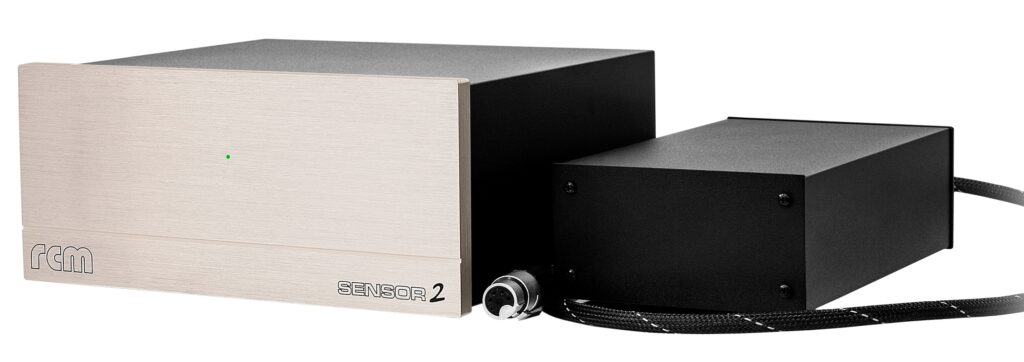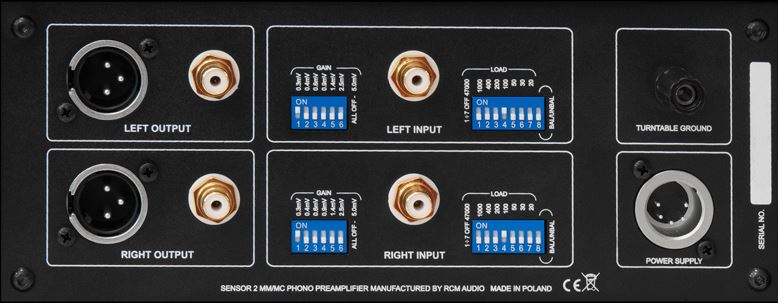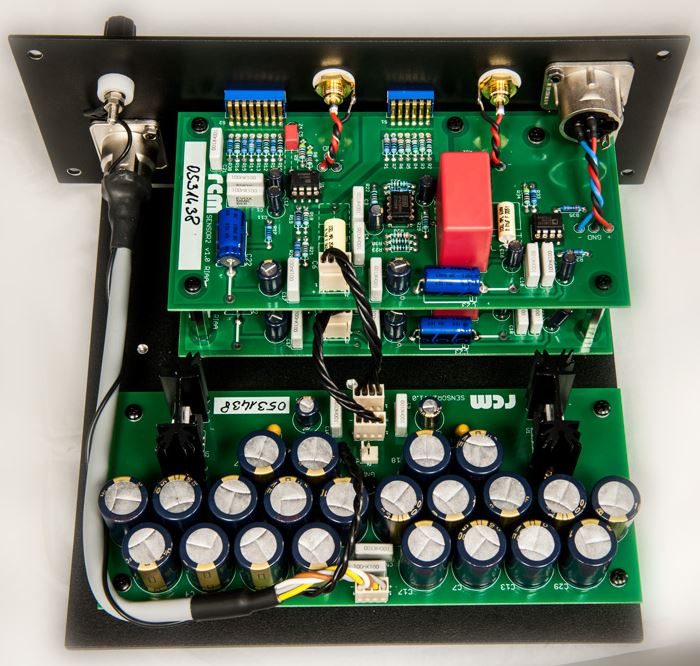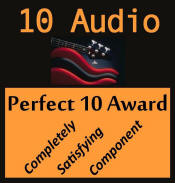The new RCM Sensor 2 phono preamplifier follows the successful RCM Sensor Prelude IC that was reviewed here on 10 Audio in December, 2012. I did not have the older version on hand for direct comparison, but I will tell you this without qualification or reservation: The RCM Sensor 2 sounds wonderful. In fact, it sounds so musical and involving and convincing that I spent my time listening to and enjoying music and neglected my duties as a reviewer to take extensive notes. This behavior directly influenced the overall rating.
The $3,990 Sensor 2, with its separate power supply enclosure, has these improvements over the original Sensor Prelude IC:

– Power supply is larger and outputs DC instead of AC
– More capacitors in the PS for better stabilization of the current flow
– Improved circuit design and layout
– Higher quality IC’s, resistors and capacitors
– Casework with no visible screws and low resonance design
– More cartridge loading options – 20, 30, 50, 100, 200, 400, 1000, and 47,000 Ohms, and their parallel combinations (example: 1000 Ohms + 400 Ohms = 285.7 Ohms)
– Improved grounding terminal
Gain is adjustable from 52 to 76 dB. Furutech gold connectors add $500 and platinum connectors add $600 to the base price.
Other components on hand included Mark Levinson No. 52 and Bent Audio Tap-X preamplifiers, VPI Aries 3D turntable with 10” printed tonearm, Basis 2500 Signature turntable with Vector 4 tonearm, Miyajima Madake moving coil cartridge, AMG Teatro moving coil cartridge, Musical Surroundings Nova II, Pass XP-25 and Jasmine LP 3.0 phono preamplifiers, Cary DAC-100t and DAC-200ts, and Auralic Vega DA converters, and Lynx Hilo AD/DA converter. The source for all things digital is a custom DAW/PC/music server running JRiver Media Center 19. At the end of the chain are Acoustic Imagery Atsah amplifiers, Pass XA 30.8 amplifier, and Magnepan 3.7 loudspeakers. The Magnepans have had significant upgrades with the installations of Audio Horizons Platinum Reference fuses and Mye stands. PSB Imagine T speakers from the home theater system are often used to validate findings in this system. The interconnects are Audioquest WEL Signature XLR and Mogami XLR. Power protection and purification are provided by a PS Audio Dectet for the preamplifiers and source components, and a PS Audio Quintet for the power amplifiers. The latter provides remote turn-on and -off of the power amplifiers. This is a high performance audio system.
With the RCM Sensor 2 in use, sustaining analytical listening is a challenge. The Sensor 2 is musical! I could go on and on about how this component delivers listening enjoyment, but let me tell you why.

The Magnepan speakers are well known to present a large apparent musical image. However, different components can fill this space in very different ways. These reproduced sonic images range from a clustered center image with little happening at the sides, to a large diffuse image where all the performers are presented without form or definition, to a well-defined sound stage in which individual performers are easy to point to and “see” on a stage that extends wider than the speaker locations and very deeply into the furthest recesses in the back. It is relevant to note something that has been often discussed over the years: Can we ever hear from a recording what the actual sound stage and recording venue was like when the recording was made? Microphone position, recording technique and electronics will all affect how that stage is presented in your listening room, and will almost certainly be different than what you might have heard if you were seated in the audience when the recording was made. So when we talk about how a component presents a sound stage, the conclusions are regularly inconclusive.

The sound stage, or virtual sonic image, presented by the Sensor 2 is always very wide and very deep. Individual performers are precisely located on that stage left to right and front to back. This is clearly heard on “Homeless” from Paul Simon’s Graceland LP. The Black Mombazo singers are presented very realistically in a wide arc behind Mr. Simon, and the individual voices of the various singers are easily recognizable. For well recorded orchestral music, the soundstage ignores the back wall behind the speakers of the listening room and does a very credible job of recreating the entire acoustic of the original recording space. Of all the phono preamps on hand during the review period, only the $10,600 Pass XP-25 carved out more of the edge of individual performers, defining their body limits somewhat more clearly. This is attractive for analytical listening, but really has no effect on the gestalt of the listening experience and can actually detract from enjoying the performances because recording technique – especially studio multi-track mixes – are rarely perfect and can become a noticeable and distracting detriment to enjoyment. The Sensor 2 will give you all the recording warts, never fear. The Sensor 2 sounds very similar to the superb phono stage in the $30,000 Levinson No. 52.
The bass is outstanding and extends very deeply and with seemingly complete resolution. This character continues into the midrange and treble with no change of harmonic resolution across the musical spectrum. This tonal linearity is necessary for the music to be in the least part believable and immersive. The Sensor 2 does not sound like a noticeably solid state device. It has the harmonic warmth in the midrange and lower treble of a fine vacuum tube phono stage, while presenting a more natural and extended sound in the low bass and upper treble. It is almost a cliché nowadays to say that a component combines the best of solid state and tube sound, but the Sensor 2 actually delivers on that lofty goal.
In fact, listening to the Sensor 2, along with the remarkable new Pass XA 30.8 amplifier and remarkable not-so-new Acoustic Imagery Atsah amplifiers and new Cary DAC-200ts used with its solid state output, I am tempted to declare that the age of vacuum tubes is over and has passed into technological history. More than tempted, actually, to the point where my recent purchase decisions specifically target non-tube components. If you think this opinion is premature or simply ridiculous, just listen to the RCM Sensor 2. Welcome to the future!
This review is only about half the length of most reviews here on 10 Audio, but as I mentioned earlier, analytical listening to the Sensor 2 is a challenge. All other phono stages are inferior in one or more ways, and none so far are so reliably enjoyable. The Sensor 2 presents compelling performances that sound very natural and complete. The RCM Sensor 2 turns sound into music.
Overall Rating: 10 LPs

Link to distributor: SORAsound
My thanks to Mehran at SORAsound for his very kind assistance with this review.
